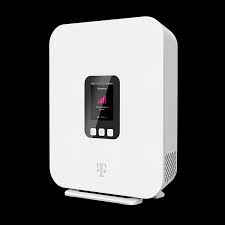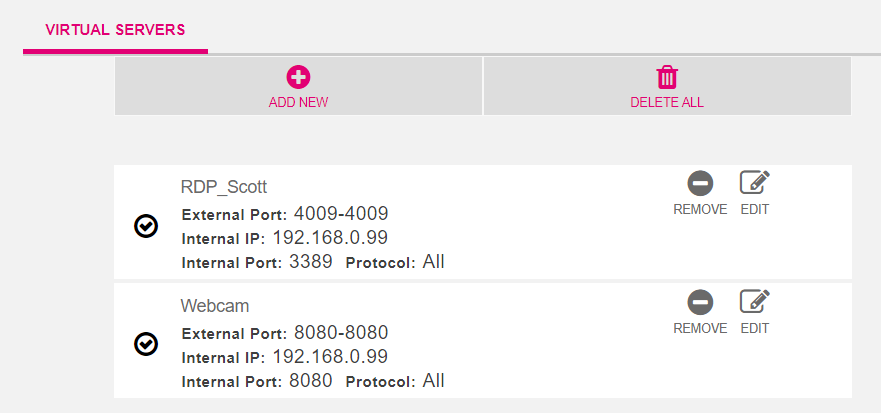T Mobile Home Internet Port forwarding
Hosting a Web Server: Port forwarding enables other users to visit your website using your public IP address if you wish to host a game server or other online service from your home network.
Device Remote Access: T Mobile Home Internet Port forwarding makes it possible to monitor and control devices like security cameras, network-attached storage (NAS) devices, and smart home gadgets from any location with an internet connection.

Gaming:
To guarantee a steady connection and the best possible gaming experience, many online multiplayer games need that certain ports be routed to your PC or gaming console.
Peer-to-Peer (P2P) File Sharing: To maximize download speeds and enable connections with other users, T Mobile Home Internet Port forwarding could be required if you use peer-to-peer file sharing software.
Extra Advice for Improving Internet Port Forwarding in T Mobile Homes
Dynamic DNS (DDNS):
To link a domain name to your dynamic IP address, think about configuring Dynamic DNS (DDNS) if you are hosting services like a web server or remote access device. This lets people utilize a memorable domain name to access your services, even if your public IP address fluctuates.
Security Points to Remember: When opening ports on your router, exercise caution as this may put your network at risk for security issues. Keep an eye out for any unusual activity on your network and only forward ports that are required for the services you plan to utilize.
In certain situations, port triggering could be preferable to static T Mobile Home Internet Port forwarding. Port triggering, which can be more secure than leaving ports open all the time, dynamically opens and closes ports in response to network activities. To find out if port triggering is accessible, check your router’s settings or manual. Not all routers enable this option, though.
Reserved IP Addresses:
Reserved IP Addresses: Give your home network’s devices static IP addresses, sometimes referred to as reserved IP addresses, to guarantee that T Mobile Home Internet Port forwarding policies continue to be effective. This stops T Mobile Home Internet Port forwarding configurations from being affected by changes in IP addresses.
Verify the ISP’s restrictions: For security or network management reasons, some Internet service providers (ISPs), like T Mobile, may block access to specific ports or services. Make sure your ISP permits the use of the ports you wish to forward before configuring port forwarding.

Quality of Service (QoS): After turning on port forwarding, if you are still having network congestion or slowdowns, think about setting up your router’s QoS settings to give priority to traffic for particular services or devices.
Advanced Methods for Forwarding T Mobile Home Internet Ports
T Mobile Home Internet Port Range Forwarding: By forwarding individual ports, you can send a group of ports to a certain network device. This is helpful for services or apps like online gaming or video conferencing that need a variety of ports to operate correctly.
Protocol-Specific Transmission: Certain protocols, like TCP or UDP, may be necessary for the forwarding of certain applications or services. To guarantee compatibility, make sure port forwarding rules are configured using the correct protocol.
PAT, or port translation: NAT overload, sometimes referred to as port address translation (PAT), enables several devices on your home network to share a single public IP address. If your router supports PAT, you might need to specify the translation port while setting up port forwarding.
DMZ Hosting: You can utilize your router’s DMZ (Demilitarized Zone) capability to expose a whole device to the internet. This essentially puts all incoming traffic outside of your network firewall by forwarding it to a designated device. When using DMZ hosting, use cautious because improper configuration can result in security problems.
Resolving Internet port forwarding problems with T Mobile Home
Verify IP addresses and port numbers one more time: When establishing port forwarding rules, make sure you have inputted the appropriate internal IP addresses and port numbers. Port forwarding may not work properly due to even minor errors.
Check the Firewall Configuration:Check the Firewall Configuration Make sure your router or device is set up to accept incoming traffic on the forwarded ports if you have a firewall installed. To allow traffic for the services you are T Mobile Home Internet Port forwarding for, change the firewall settings as necessary.
Turn your router back on: Restarting your router can sometimes fix port forwarding problems brought on by transient hiccups or conflicts. Refreshing your router’s settings and deleting any temporary data can also be accomplished by power cycling it.

Look for restrictions from your ISP: Verify that the ports you are attempting to forward are not being blocked by your ISP. For network management or security purposes, some ISPs block specific ports. If you need to know about port restrictions, get in touch with T Mobile Home Internet Port forwarding support.
Test from External Networks: Ask a friend who is not on your home network to test the forwarded ports from their location, or use internet port scanning tools. This might assist in figuring out whether the port forwarding rules are operational and reachable online.
Examine the router logs: Look for any error messages or signs of port forwarding issues in the logs from your network. Logs may offer important information about the root of the problem and aid in appropriate troubleshooting.
Update Router Firmware: Verify that the firmware on your router is current. Firmware updates are frequently released by manufacturers to fix security flaws, boost efficiency, and introduce new features, such as improved port forwarding capabilities.
T Mobile Home Internet in Las Vegas
T Mobile Home Internet Extender
T Mobile Home Internet Unlimited
T Mobile Home Internet Port forwarding
You may improve your T Mobile Home Internet Port forwarding setup for a variety of apps and services by using sophisticated port forwarding techniques and troubleshooting methods. Knowing these methods and troubleshooting procedures will enable you to keep your home network dependable and secure, whether you’re hosting servers for online gaming or remotely accessing gadgets. Do not hesitate to contact the T Mobile Home Internet Port forwarding support if you need more help or if you continue to experience port forwarding problems. They will provide you with individualized advice and support based on your unique configuration and needs.

